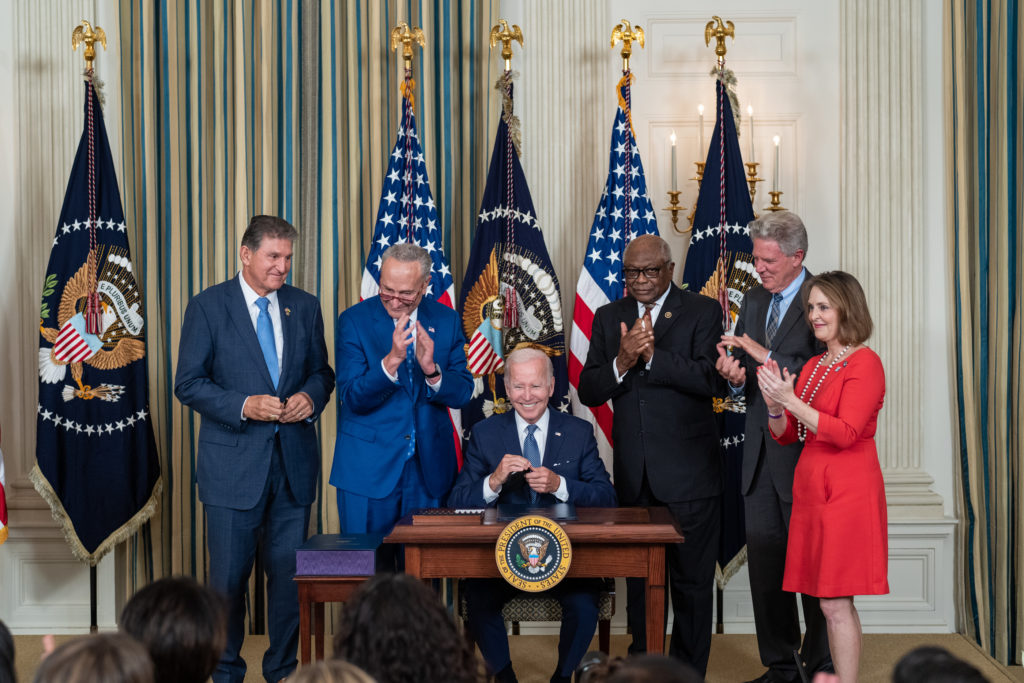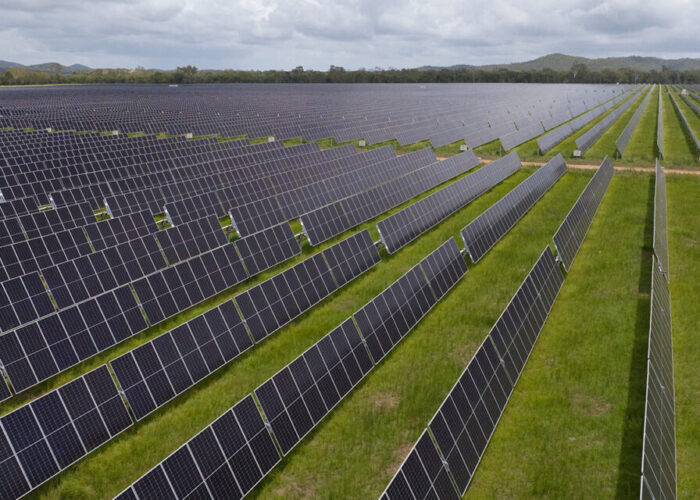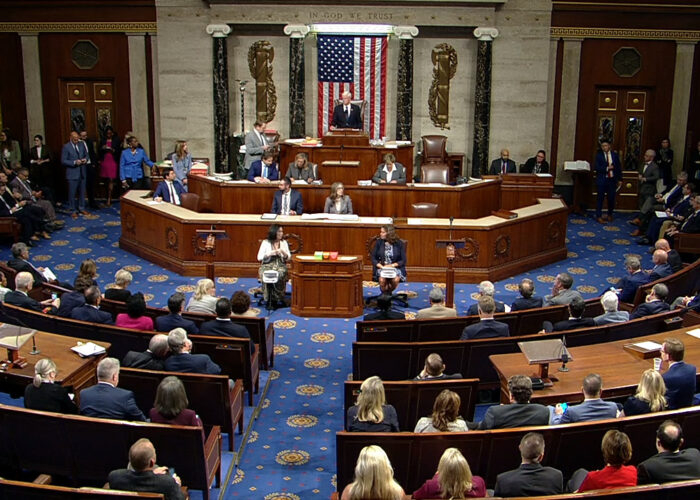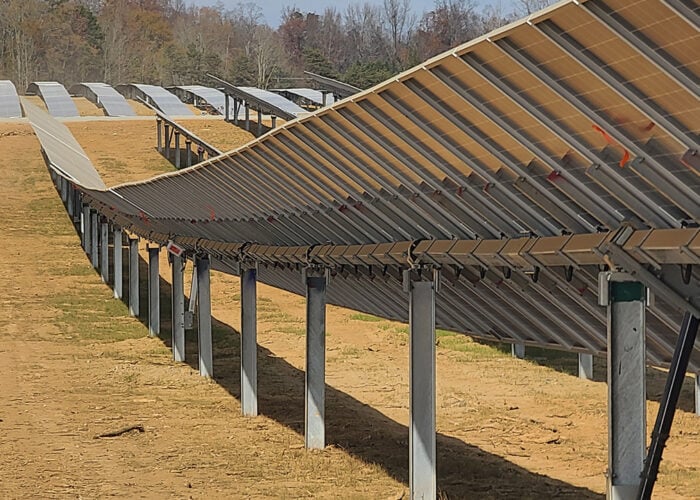
US President Joe Biden has signed the Inflation Reduction Act (IRA) into law, representing the largest climate package in US history and a major policy victory for the embattled president.
A jubilant Biden called the Act, which includes US$369 billion in energy security and climate change programmes over the next 10 years, “the biggest step forward on climate ever”.
Unlock unlimited access for 12 whole months of distinctive global analysis
Photovoltaics International is now included.
- Regular insight and analysis of the industry’s biggest developments
- In-depth interviews with the industry’s leading figures
- Unlimited digital access to the PV Tech Power journal catalogue
- Unlimited digital access to the Photovoltaics International journal catalogue
- Access to more than 1,000 technical papers
- Discounts on Solar Media’s portfolio of events, in-person and virtual
“The Inflation Reduction Act invests US$369 billion to take the most aggressive action ever in confronting the climate crisis and strengthening […] our energy security,” Biden said at the signing ceremony yesterday.
The significance of its passage should also be couched in its difficult journey into law. Over the last year, Democrat lawmakers were hoping to enact a far bigger act – the Build Back Better (BBB) Act – but this was stymied by Democratic Senator Joe Manchin’s refusal to support the larger investment package.
Manchin performed a dramatic U-turn at the end of last month, forcing a compromise for a slimmed down version of BBB, which became called the IRA.
The IRA passed the evenly split US Senate after securing Manchin’s support on 8 August, with Vice President Kamala Harris casting the deciding ballot, and then moved onto the House of Representatives where it passed with a greater majority on 12 August.
It has been heralded as a new dawn for US solar following a difficult couple of years for the industry that has seen import restrictions on Chinese products, supply chain disruptions and geopolitical events cause rising module prices and upwards pressure on project costs, resulting in delays, cancellations and a collapsing of deployment.
“Congratulations to United States President Biden and Congress for passing the Inflation Reduction Act, a truly historic piece of legislation for energy and climate,” said Fatih Birol, executive director of the International Energy Agency. “This transformational plan can accelerate the transition to a cleaner, more affordable and more secure energy system in the United States and beyond.”
Tune in as I deliver remarks and sign into law the Inflation Reduction Act, a historic bill that will lower costs for American families, combat the climate crisis, reduce the deficit, and finally make the largest corporations pay their fair share in taxes. https://t.co/QVATPkuSkN
— President Biden (@POTUS) August 16, 2022
A key component of the IRA is the extension of the Investment Tax Credit (ITC) at 30% for commercial and residential solar systems, including those built this year, for the next decade. Larger projects – those over 1MW – will be granted a standard 6% tax credit unless they conform to certain labour and wage laws, at which point the credit would again rise to 30%.
Moreover, there is a 10% add-on for having a certain amount of domestically produced solar components in a project, as well as another 10% for constructing projects in specific locations.
The IRA also contains vital manufacturing credits that have been designed to onshore and build out a US PV manufacturing base, with BloombergNEF calling the IRA “the best chance the US has” to build out a solar manufacturing base. Under the proposals, the solar manufacturing tax credits are as follows:
- Modules would receive US$0.07, multiplied by the capacity of the module (on a per direct current watt basis)
- Thin-film or crystalline PV cells would get US$0.04, multiplied by the cell’s capacity (on a per direct current watt basis)
- Wafers would secure US$12 per square metre
- Polymeric backsheets would receive US$0.40 per square metre
- Solar-grade polysilicon would get US$3 per kilogramme
Those credits are broadly in line with manufacturing support included in the Solar Energy Manufacturing for America (SEMA) Act, first proposed by Senator Jon Ossoff last year, that was welcomed by the solar sector but received less support in government circles.
Renewable energy lawyer Kevin Pearson said the “extensions and expansions of the tax credits available for qualified renewable energy projects is a welcome development for developers and investors and likely will result in increased investment in solar.”
“A number of aspects of the bill still need to be clarified over the coming months and years, but the transferability of tax credits also could significantly impact the scope of potential tax credit investors and could lead to expanded investment in these projects.”
Indeed, many solar manufacturers, from Qcells to Maxeon to First Solar, had intimated they would ramp up investment in the US if the IRA was passed given the favourable manufacturing policies it contains.
Meanwhile, the impacts of the IRA will not only be felt in terms of manufacturing and deployment. Renewable energy law firm Baker Botts said the IRA will “bring great improvements to the entire energy value chain” and is “also expected to bring a lot more M&A activity within the energy sector, especially in renewables and clean tech.”
The firm said the IRA will bring “more financial certainty to companies, which is likely to lead to improved valuations and more deal activity.”
Baker Botts’ special counsel Kyle Hayes told PV Tech: “This bill increases the financial viability of solar projects and will result in increased investments in the sector.
“Over the past five years, private equity funds, especially infrastructure-focused funds, have been increasingly investing in renewables projects, principally solar, wind and battery storage, and the Inflation Reduction Act will encourage them to ramp up investments in clean energy.”
“The IRA comes as welcome news to the renewable energy industry as important tax incentives for wind, solar and other renewable energy resources are set to expire or wind down,” said law firm Pierce Atwood.
“Existing law also did not provide any federal tax incentives for the rapidly growing stand-alone energy storage and clean hydrogen industries.”
Indeed, energy storage has been a big winner in the IRA, with the requirement for co-located storage in order to gain access to ITCs now scrapped. PV Tech’s sister site Energy-storage.news has examined what the IRA means for the US storage industry, with big implications for hybrid solar-plus-storage projects, which you can access here.
Full details of the IRA can be found on the US Congress website here.






